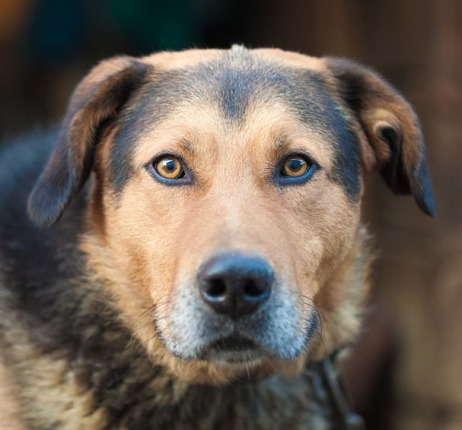The Threat of Stillness - By: Nicole Wilde
 I
recently observed a temperament test being conducted to determine
whether a dog was aggressive toward other dogs. The dog in question was a
large, strong breed, and there was much concern because of his past
history. As I watched, it became obvious that the other dog being used
in the test was very worried. She licked her lips and averted her gaze,
both common stress signals. But something else concerned me a lot more:
she seemed afraid to move a muscle. Was it because the dog being tested
was lunging at her, barking, or otherwise being overtly threatening? No.
In fact, he was standing stock still, head slightly lowered, body
tensed, staring directly at her. I could feel the tension in my own body
just watching it. Seconds later, the dog being tested exploded in a
display that, had he not been on leash, surely would have ended in
physical harm to the other dog.
I
recently observed a temperament test being conducted to determine
whether a dog was aggressive toward other dogs. The dog in question was a
large, strong breed, and there was much concern because of his past
history. As I watched, it became obvious that the other dog being used
in the test was very worried. She licked her lips and averted her gaze,
both common stress signals. But something else concerned me a lot more:
she seemed afraid to move a muscle. Was it because the dog being tested
was lunging at her, barking, or otherwise being overtly threatening? No.
In fact, he was standing stock still, head slightly lowered, body
tensed, staring directly at her. I could feel the tension in my own body
just watching it. Seconds later, the dog being tested exploded in a
display that, had he not been on leash, surely would have ended in
physical harm to the other dog.We are taught things about dogs early on. We learn that a growl is a warning, and that if a tail is wagging, that dog is happy (although that isn’t always the case). If a dog is lunging and barking we know to be careful, because the dog is emotionally aroused in a potentially dangerous way. But what we’re not taught is to beware of stillness.
As most trainers know, the vast majority of what we call “aggression” is really fear-based reactivity. While it’s true there are dogs out there who are flat-out aggressive, there are a lot more who are acting defensively. All of that lunging and barking is their way of saying, “Stay away from me! Don’t make me come over there!” In truth, they don’t want to come over there. What they want is for the scary thing to vanish into oblivion, preferably yesterday. But think about this: if a dog really meant to attack, he would. The lunging, barking dog is spending precious energy on a display that, if heeded, will actually avoid conflict. But if a dog is very still, staring, body fairly humming with tension, he’s conserving his energy. That is a dog who should cause the hairs on your own neck to stand up, because he might very well attack.
Read the entire article
Like Us on FacebookFollow on Twitter







No comments:
Post a Comment